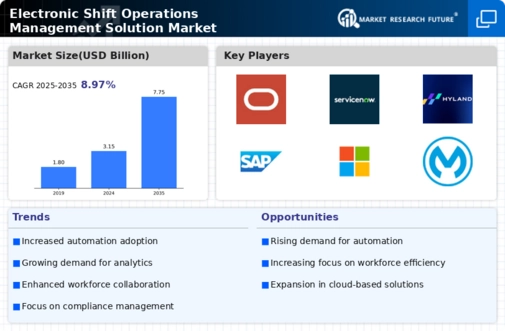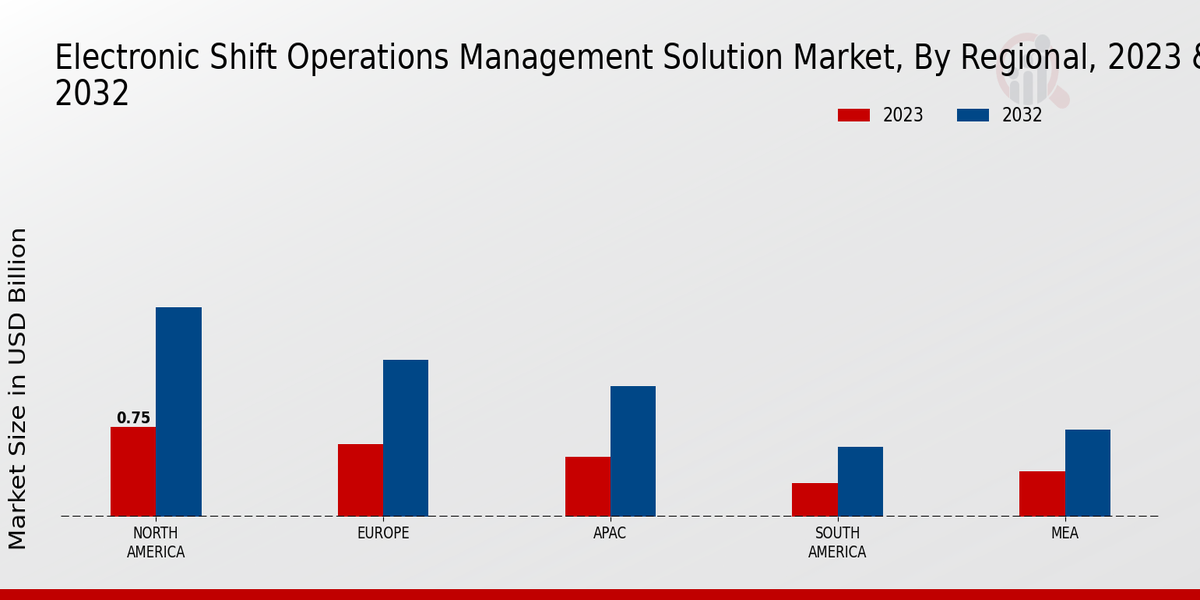Global Workforce Mobility Trends
The increasing mobility of the global workforce significantly influences the Global Electronic Shift Operations Management Solution Market Industry. As organizations expand their operations internationally, managing shifts across diverse geographical locations becomes increasingly complex. Electronic shift management solutions offer the flexibility and scalability required to accommodate varying labor laws, cultural differences, and time zones. This adaptability is crucial for multinational corporations aiming to maintain operational consistency and efficiency. Consequently, the market is poised for growth as businesses recognize the necessity of robust shift management systems to navigate the challenges posed by a mobile workforce.
Rising Focus on Employee Engagement
Employee engagement emerges as a vital driver within the Global Electronic Shift Operations Management Solution Market Industry. Organizations are increasingly aware that engaged employees contribute to higher productivity and lower turnover rates. Electronic shift management solutions facilitate better communication, transparency, and flexibility in scheduling, which are essential for fostering employee satisfaction. By providing employees with greater control over their shifts and work-life balance, companies can enhance engagement levels. This focus on employee well-being is likely to propel the adoption of electronic shift operations management solutions, further driving market growth.
Technological Advancements in Automation
Rapid technological advancements play a pivotal role in driving the Global Electronic Shift Operations Management Solution Market Industry. Innovations in automation technologies, such as artificial intelligence and machine learning, enable organizations to implement sophisticated shift management systems that enhance decision-making and predictive analytics. These advancements facilitate real-time monitoring and data-driven insights, allowing businesses to respond swiftly to changing operational demands. As organizations increasingly leverage these technologies, the market is expected to witness substantial growth, with projections indicating a rise to 7.75 USD Billion by 2035, underscoring the transformative impact of automation on shift operations.
Regulatory Compliance and Safety Standards
Compliance with regulatory requirements and safety standards is a critical driver for the Global Electronic Shift Operations Management Solution Market Industry. Organizations across various sectors face stringent regulations that necessitate accurate tracking of employee shifts and work hours. Electronic shift management solutions provide the necessary tools to ensure compliance, thereby mitigating risks associated with labor law violations and enhancing workplace safety. As businesses prioritize adherence to these regulations, the demand for electronic shift operations management solutions is expected to grow, contributing to a compound annual growth rate of 8.53% from 2025 to 2035.
Increasing Demand for Operational Efficiency
The Global Electronic Shift Operations Management Solution Market Industry experiences a surge in demand as organizations strive for enhanced operational efficiency. Companies are increasingly adopting electronic shift management solutions to streamline processes, reduce manual errors, and optimize workforce allocation. This shift is particularly evident in sectors such as healthcare and manufacturing, where operational efficiency directly correlates with productivity and cost savings. As a result, the market is projected to reach 3.15 USD Billion in 2024, reflecting a growing recognition of the value these solutions bring to organizations aiming for operational excellence.


























Leave a Comment